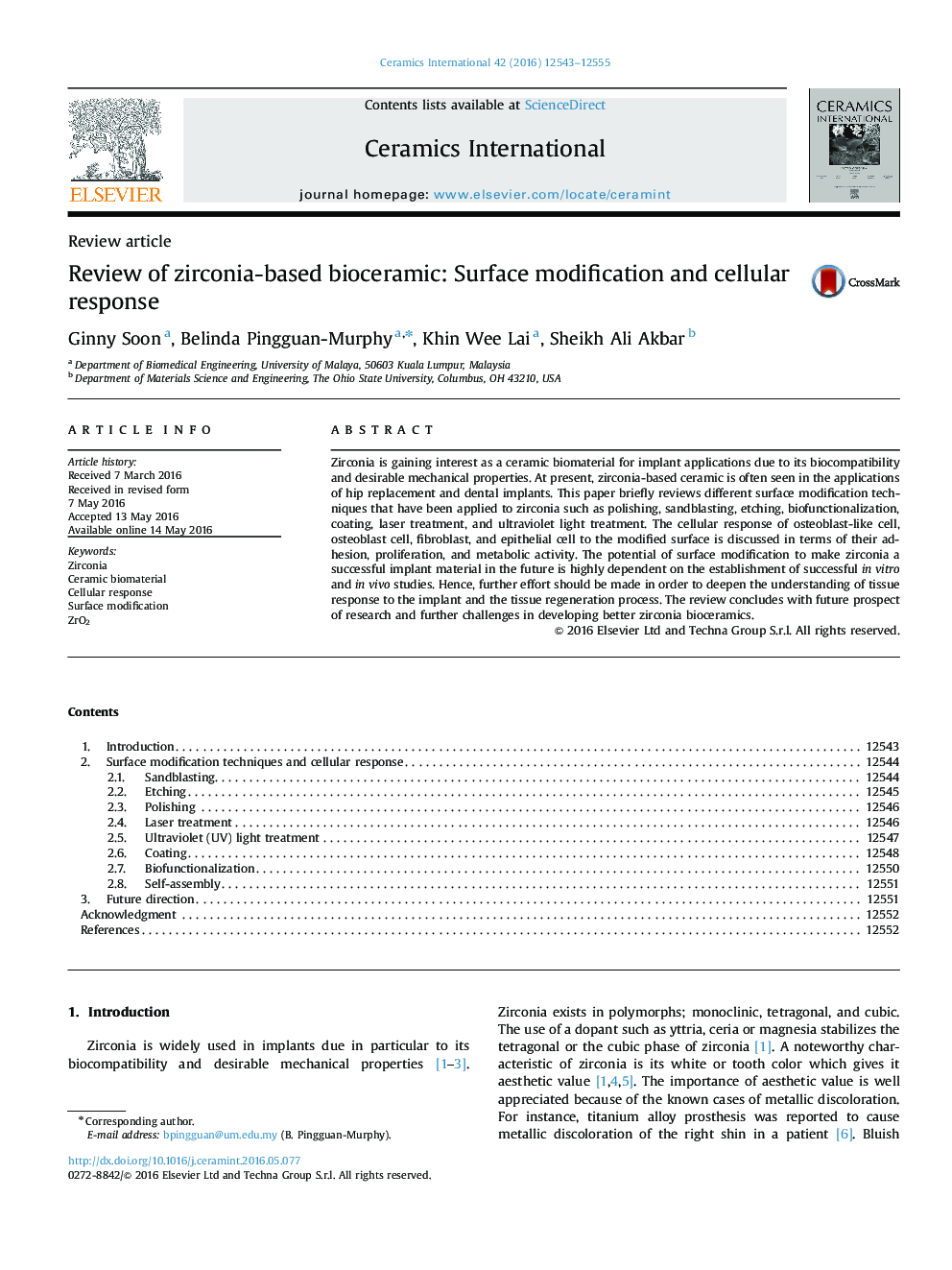| Article ID | Journal | Published Year | Pages | File Type |
|---|---|---|---|---|
| 1458691 | Ceramics International | 2016 | 13 Pages |
Zirconia is gaining interest as a ceramic biomaterial for implant applications due to its biocompatibility and desirable mechanical properties. At present, zirconia-based ceramic is often seen in the applications of hip replacement and dental implants. This paper briefly reviews different surface modification techniques that have been applied to zirconia such as polishing, sandblasting, etching, biofunctionalization, coating, laser treatment, and ultraviolet light treatment. The cellular response of osteoblast-like cell, osteoblast cell, fibroblast, and epithelial cell to the modified surface is discussed in terms of their adhesion, proliferation, and metabolic activity. The potential of surface modification to make zirconia a successful implant material in the future is highly dependent on the establishment of successful in vitro and in vivo studies. Hence, further effort should be made in order to deepen the understanding of tissue response to the implant and the tissue regeneration process. The review concludes with future prospect of research and further challenges in developing better zirconia bioceramics.
